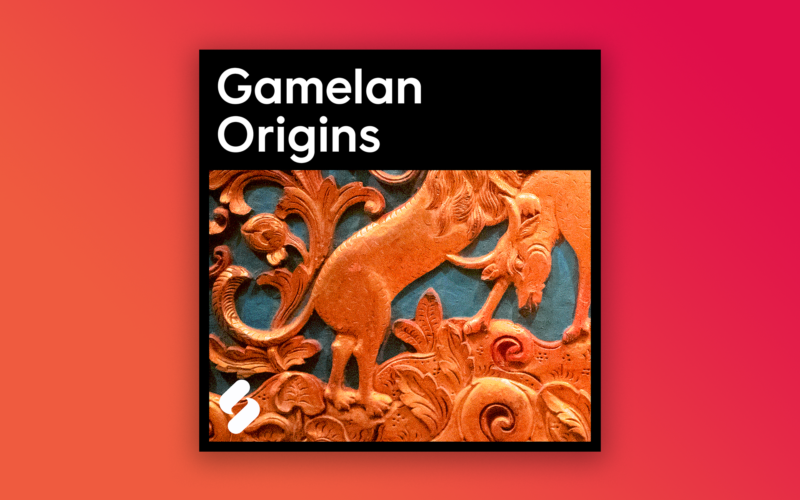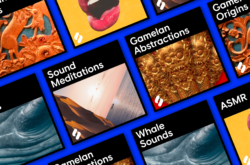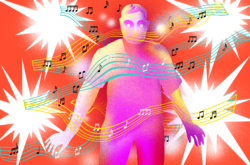“Gamelan” refers to a family of bronze mallet percussion, as well as one of the world’s richest musical languages.
Dating back nearly 1,000 years, gamelan is Indonesia’s treasured musical tradition, art form, and spiritual expression. Experimental electronic producer Tristan Arp had the rare honor of great sensitivity to document this sound palette in the form of “Gamelan Origins” and its accompanying collection, “Gamelan Abstractions.” Creating these hinged on the selection of right Indonesian ensemble who would be willing to share the sound of their orchestra. Tristan Arp found Gamelan Semara Ratih to be open and enthusiastic over email and later, in person — below, we asked him about the experience of recording its performances and more.
What was the process of recording this pack like?
When I travelled to Bali, I met Gamelan Semara Ratih’s director Anom. We had a really nice time sharing stories about our respective musical journeys and agreed to record the next day with about 20 members of his ensemble. The backyard of my Airbnb was surrounded by cascading rice paddies and Anom took a liking to the scene, suggesting we record there. That night, the musicians came with their caste, bronze instruments, some of which weighed hundreds of pounds. We recorded the full ensemble outdoors the next morning with a simple left-center-right mic setup, welcoming the sounds of cicadas and the nearby jungle. We moved indoors to close-mic individual members of the ensemble for isolated one-shots.
Because gamelan incorporates fluid tempos and loose tunings (instruments often live in ‘male-female’ pairs, each tuned slightly higher / lower than the other), the post production of the pack was a delicate balancing act of locking phrases into a tempo and tonal center while maintaining the integrity of the music’s intended elasticity.
What do you hope the sounds will show producers about gamelan music?
Western music is just one language in a world of infinite sonic expressions. Gamelan is a particularly rich musical tradition and a language all its own. Its interlocking rhythms have a hypnotic effect not unlike contemporary electronic music, while predating it by centuries. Gamelan is a central component to trance induction in spiritual ceremonies. In a sense, gamelan represents a more pure means of reaching ecstatic states that we in the West have only recently achieved in rave culture. In gamelan, you’ll also hear hints of the rhythmic phasing that underpinned the music of Steve Reich and much of 20th-century minimalism.
Tell us about the sounds in the pack and what was recorded. Do you have a favorite sound in the pack?
While the majority of the pieces in the gamelan ensemble are bronze mallet instruments that are often referred to simply as “gamelan,” there’s a variety of distinct instruments with their own names. The ugal and gangsa consist of bronze bars played with a wooden hammer, while the reyong consists of bronze discs that produce a more rounded mid-range tone. The sound of the reyong is my favorite in the ensemble, and the multi-sample Ableton instrument I created allows everyone to compose their own parts with its voice.
Beyond mallet instruments, the gamelan orchestra also includes a flute (the suling) which incorporates circular breathing — often, breaths aren’t taken for minutes at a time. There are also hand drums called kendang and a large gong which provides the deepest low-end of the ensemble.
What do you hope producers will create with this pack?
I hope producers will create a kind of music that hasn’t been heard before, reinterpreting and re-contextualizing the sound of gamelan. There’s a way to incorporate sounds from different cultures in a context that’s respectful and not blatant appropriation. I believe if one is borrowing another culture’s sonic palette, then it’s nice for them to bring their own compositional language to the table. If one is borrowing a melodic or rhythmic style on the other hand, then bringing it into a new context with unique sound design is perhaps the most creative and respectful approach.
What else do you want people to know about this selection of sounds?
Gamelan Semara Ratih is no ordinary ensemble. Its members are among the best Indonesian musicians in the world, and Anom’s original compositions for the group are a progressive hybrid of traditional Indonesian aesthetics and modern experimentation. Their work, like that of most gamelan ensembles, is accompanied by dance performances that incorporate intricate costumes and reenact Hindu and Animist legends. Should you ever travel to Bali, make it a point to experience their world of sound and dance.
Sink into the hypnotic effect and rich history of gamelan with “Gamelan Origins” and “Gamelan Abstractions.”
November 13, 2019



